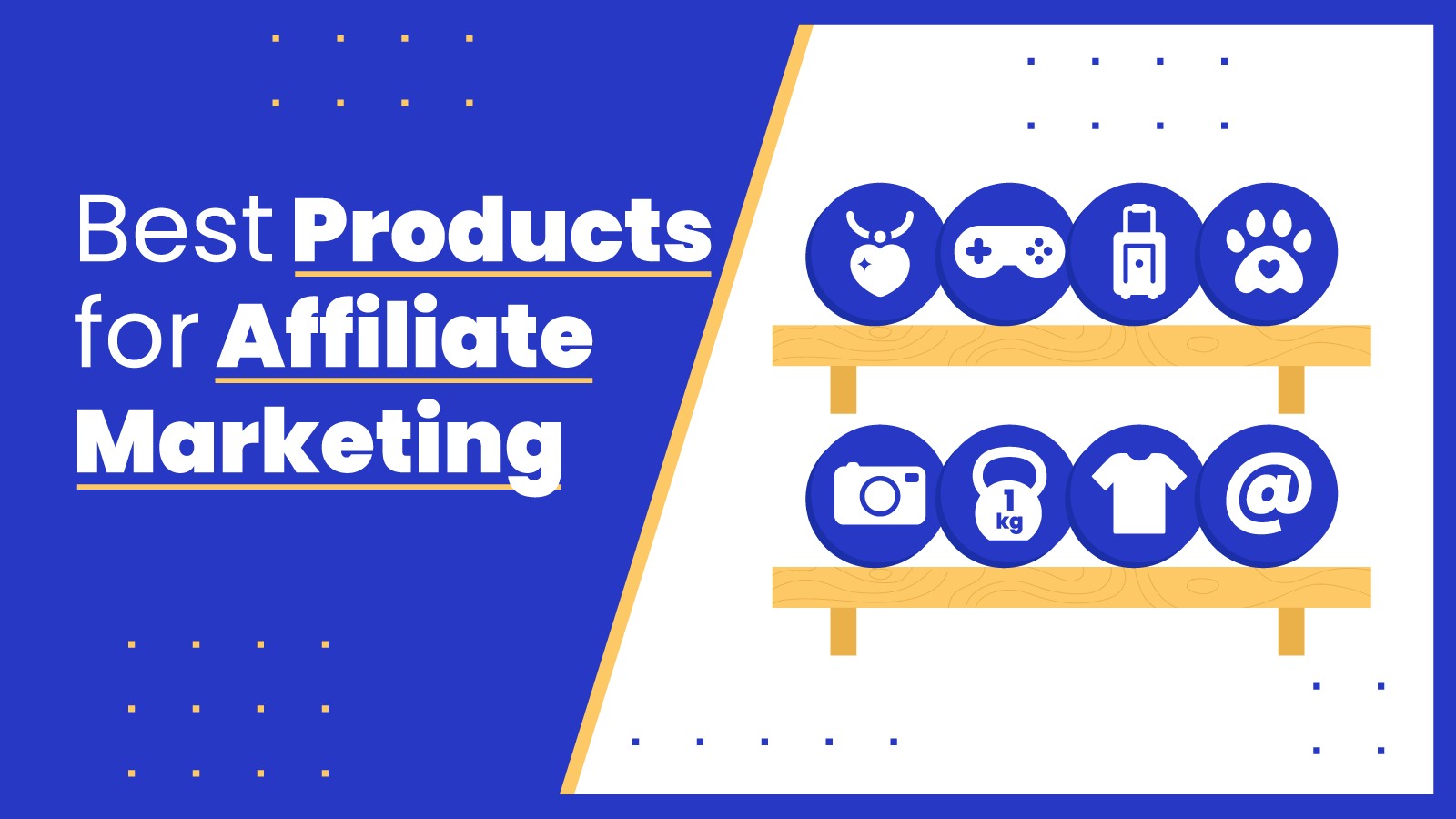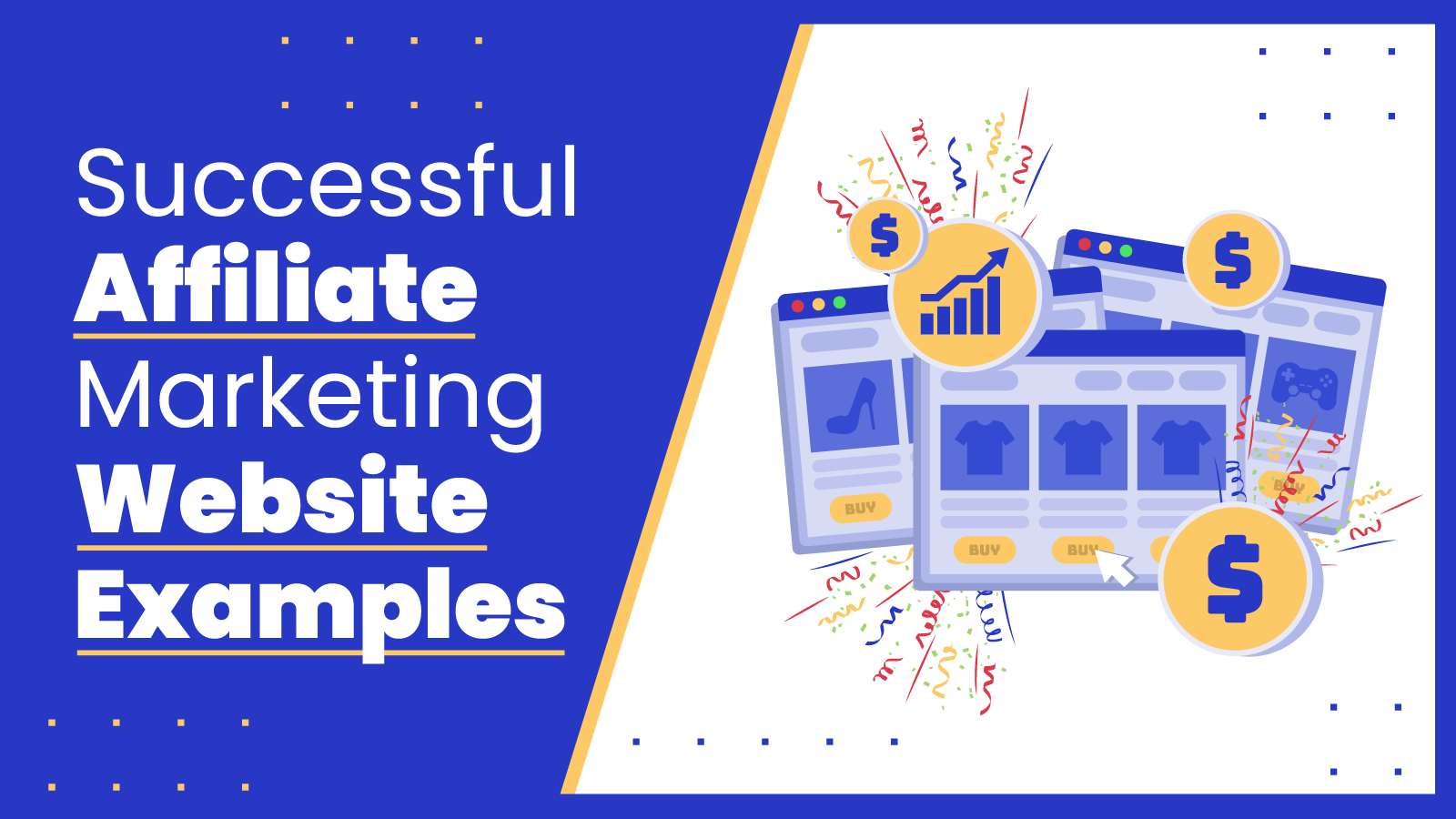Want to learn how to promote affiliate links? You’ve come to the right place.
We’ve experimented with many different methods of affiliate link promotion in our 12+ years in the affiliate marketing game – and made a lot of money along the way.

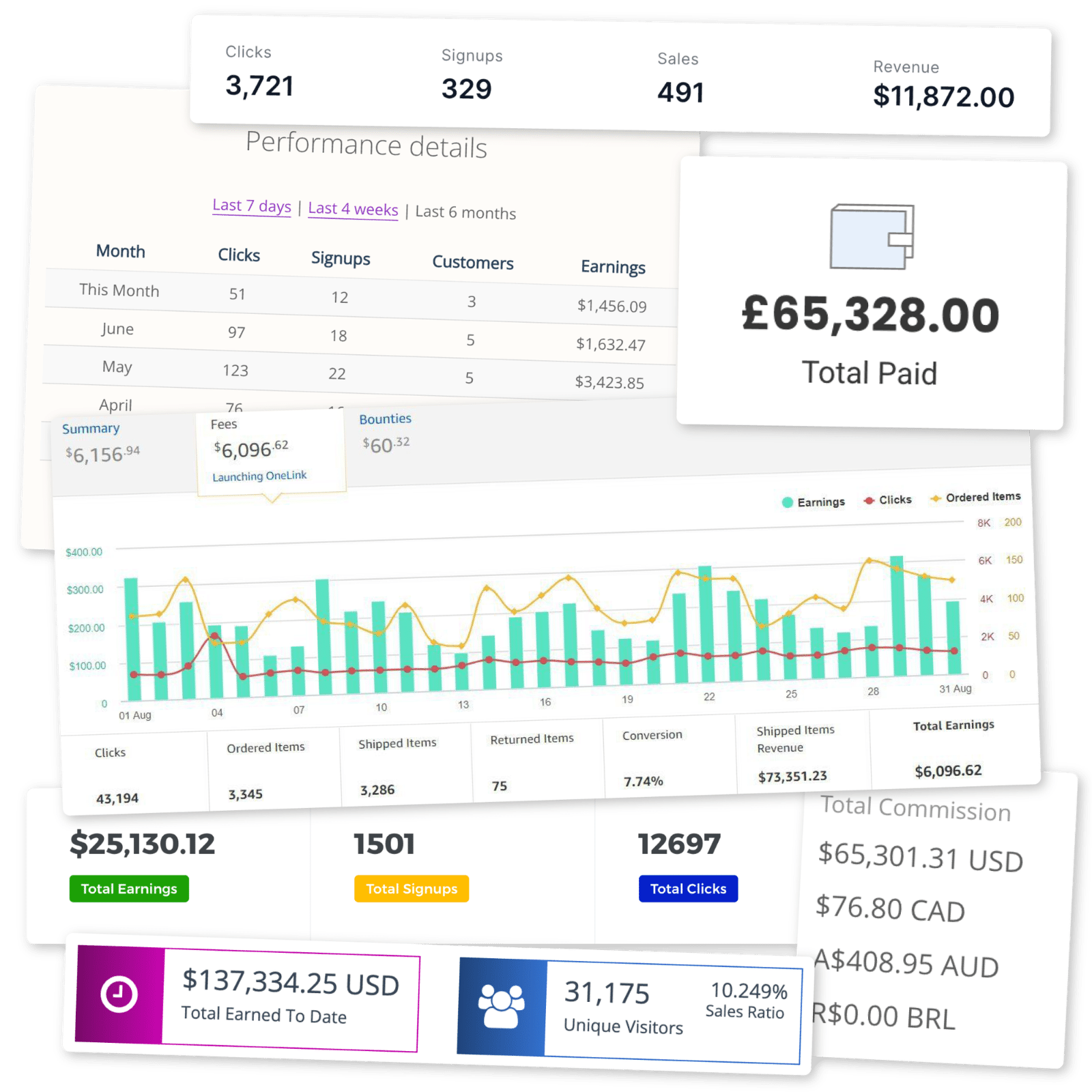
In this post, we’ll be sharing the top 10 ways you can promote your affiliate links and maximize commissions.
How to Promote Affiliate Links
Let’s explore the best ways to promote affiliate links.
- Promote affiliate links in your blog posts
- Use display banners
- Create a resource page
- Add links to digital products and courses
- Build an email list
- Make YouTube videos
- Use social media
- Make a podcast
- Share expert advice on Medium
- Run paid ads
1 Promote Affiliate Links in Your Blog Posts
Blog posts that target specific keywords are one of the best ways to promote affiliate links. By recommending products related to the target keywords, you know that visitors are going to be interested in what you recommend.
You can add affiliate links to any blog post, but those with high buyer intent perform the best. Here are some examples of high-earning post types:
- Product reviews (Surfer SEO Review)
- Comparisons: (Jasper AI vs Copy AI)
- Roundup Reviews (Best AI Writing Tools)
- Tutorials (How to Build An Affiliate Marketing Website)
It’s not just about the types of posts, though. How you display the links has a huge impact on your conversion rate.
Let’s explore the best ways to incorporate affiliate links in your blog posts:
Add links directly in the content.
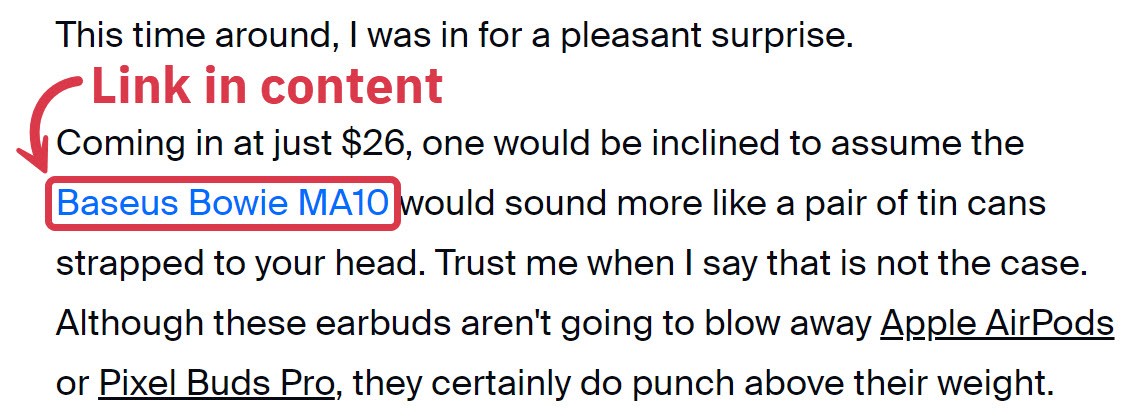
Include a button with a Call-To-Action (CTA) at the end of the post or after describing a specific product.
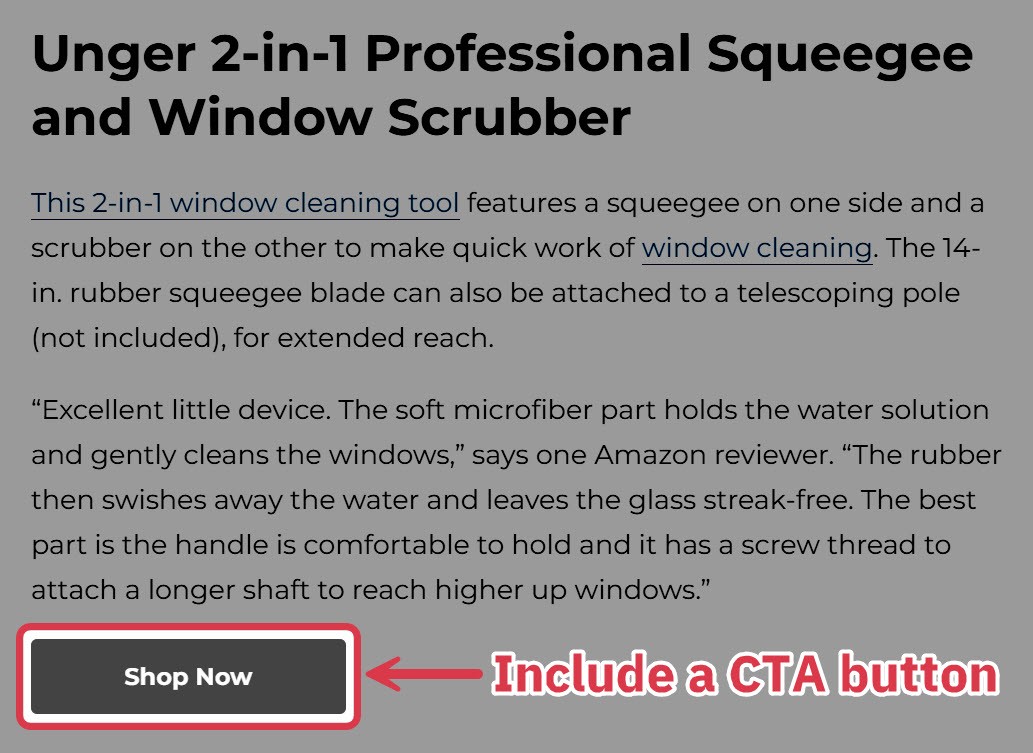
Compare similar affiliate products with tables.
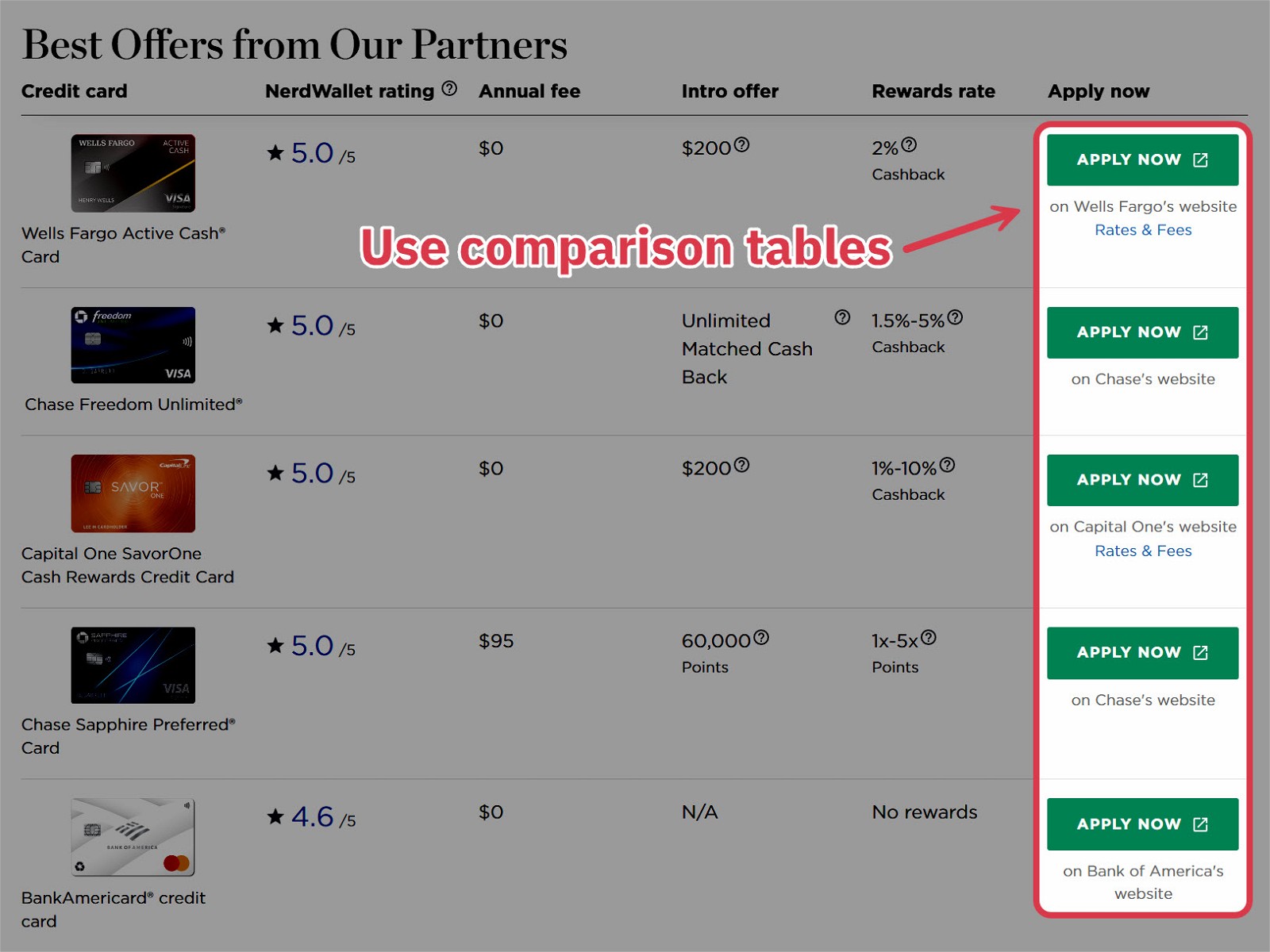
Use single product tables.
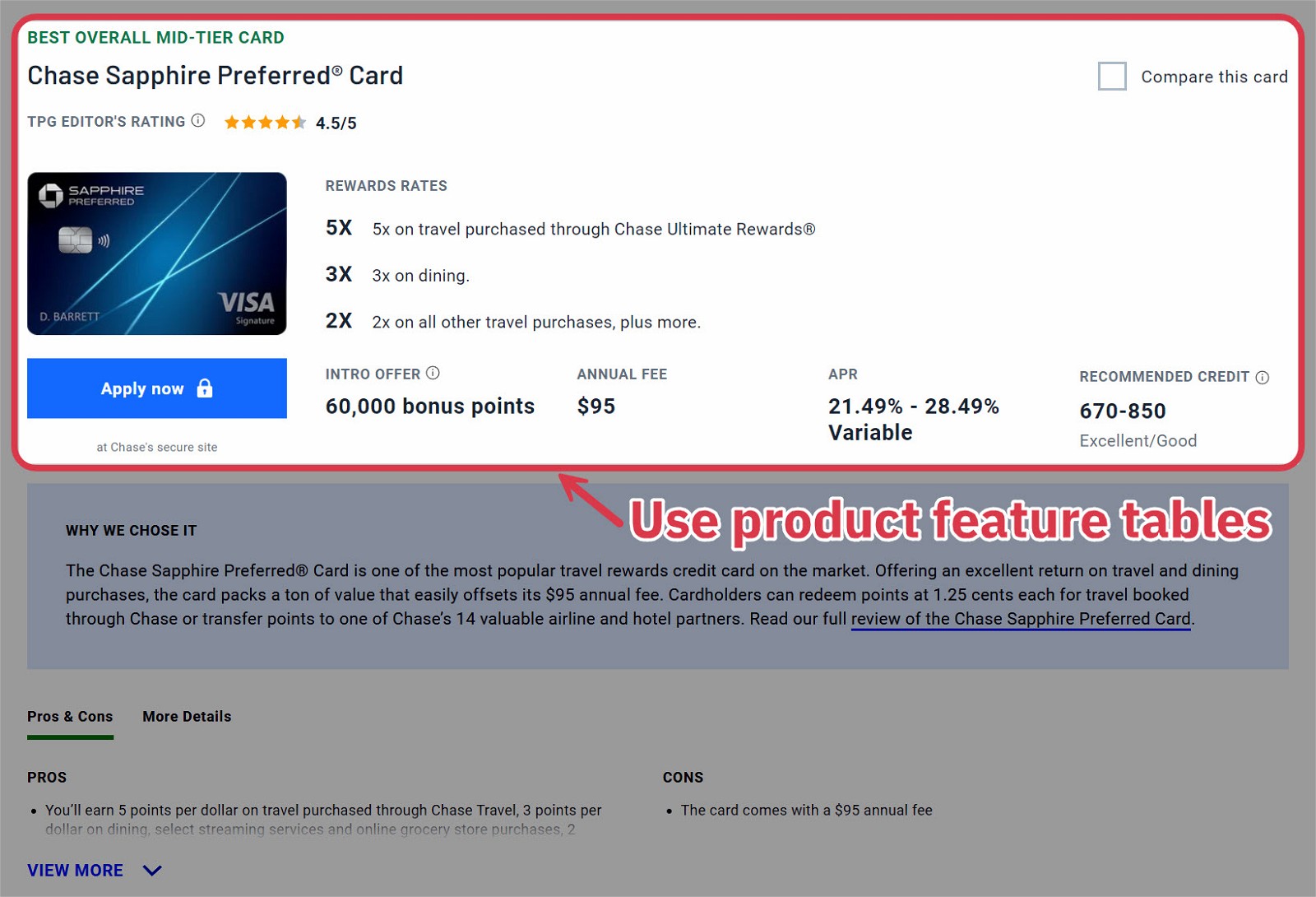
Create a list of affiliate products.

And here are some extra tips from my affiliate marketing experience that can increase conversions:
- Use the GenerateBlocks WordPress plugin to create attractive product display tables.
- Use Lasso to cloak, track, and update your affiliate links
👉 Read more: How To Write A Product Review (Templates & Examples)
2 Add Display Banners to Your Website
While display banners have the lowest click-through rate (CTR) and conversion rate (CR) of all marketing channels, using them to promote your affiliate links has some nice upsides:
- You can promote offers on every page of your website.
- They’re easy to implement. (Many affiliate programs have banners you can use.)
- Affiliate banners usually perform better than normal display ads.
Unfortunately, you won’t earn much unless you have high traffic and a great affiliate offer that makes up for the low conversion metrics.
To maximize your affiliate sales, hand-pick banners with a strong CTA and embed them on a page in target with the offer.
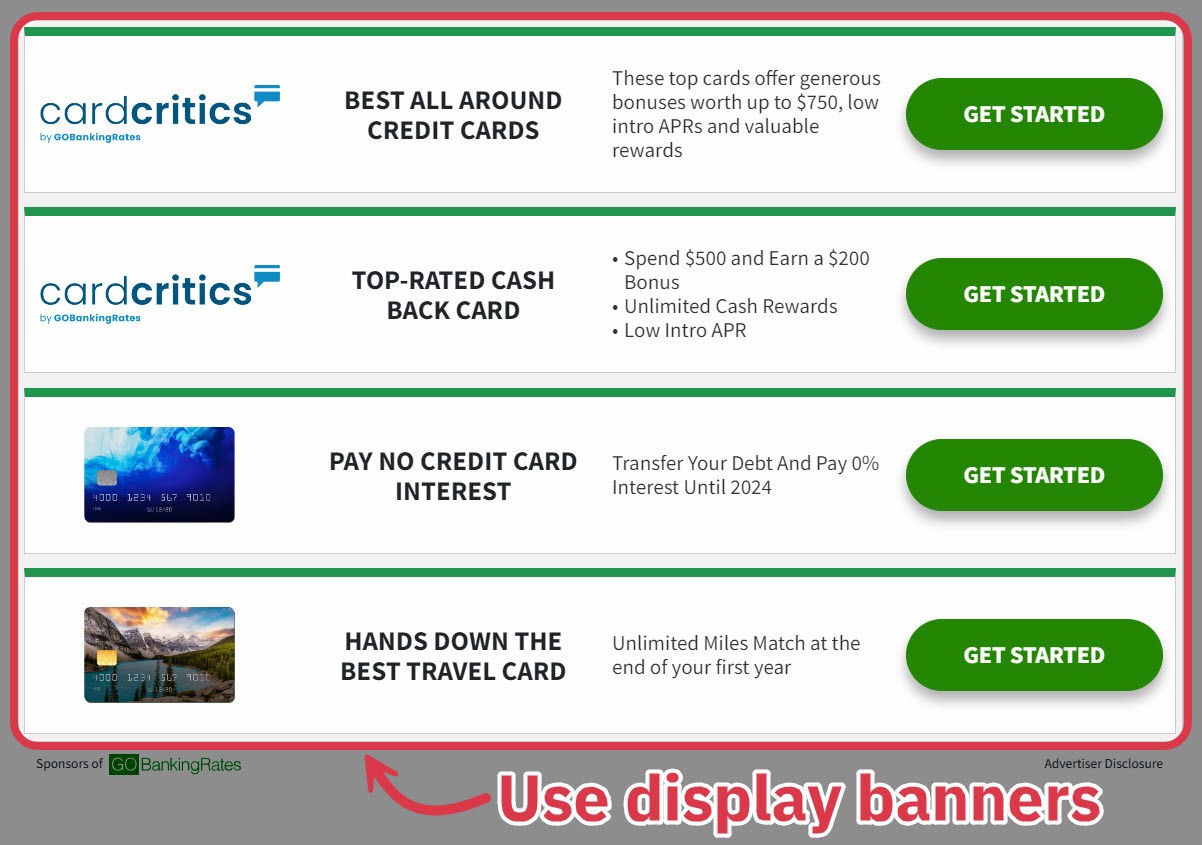
If your affiliate website has a resource or comparison page, use banners to funnel traffic toward it.

3 Create a Helpful Resource Page
A resource page is a curated list of resources or products your audience will find useful.
These are a great way to recommend affiliate products. However, your focus should be making honest recommendations – not stuffing the page with the highest-paying offers.
For example, we have a resource page with our favorite online marketing tools.
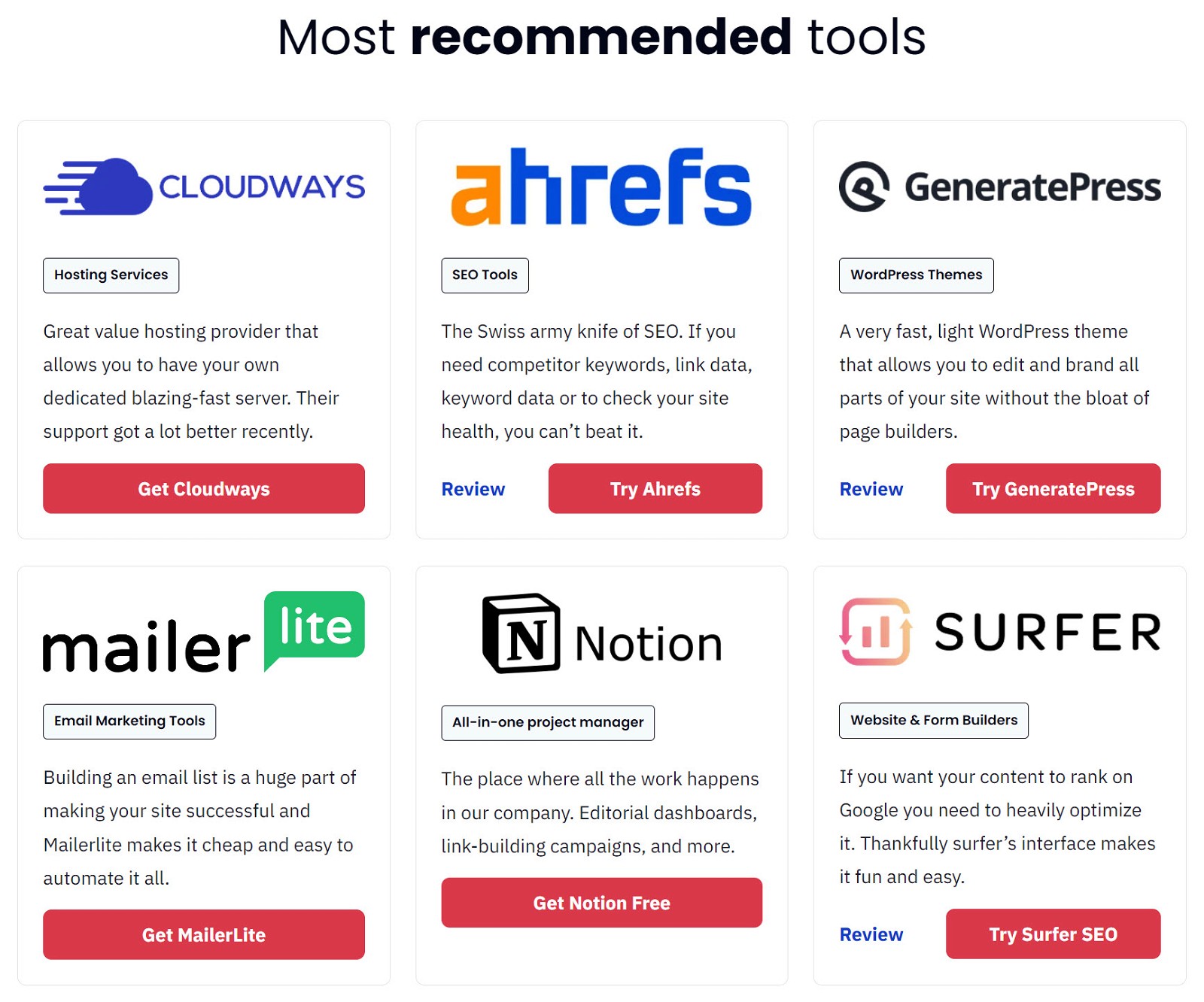
While some of these products have affiliate links, our decision to recommend them is entirely based on their quality.
It’s also a good idea to create a “Start Here” page and add it to your navigation menu. Visitors who are new to your niche will appreciate a page that recommends all the products they’ll need to get started.
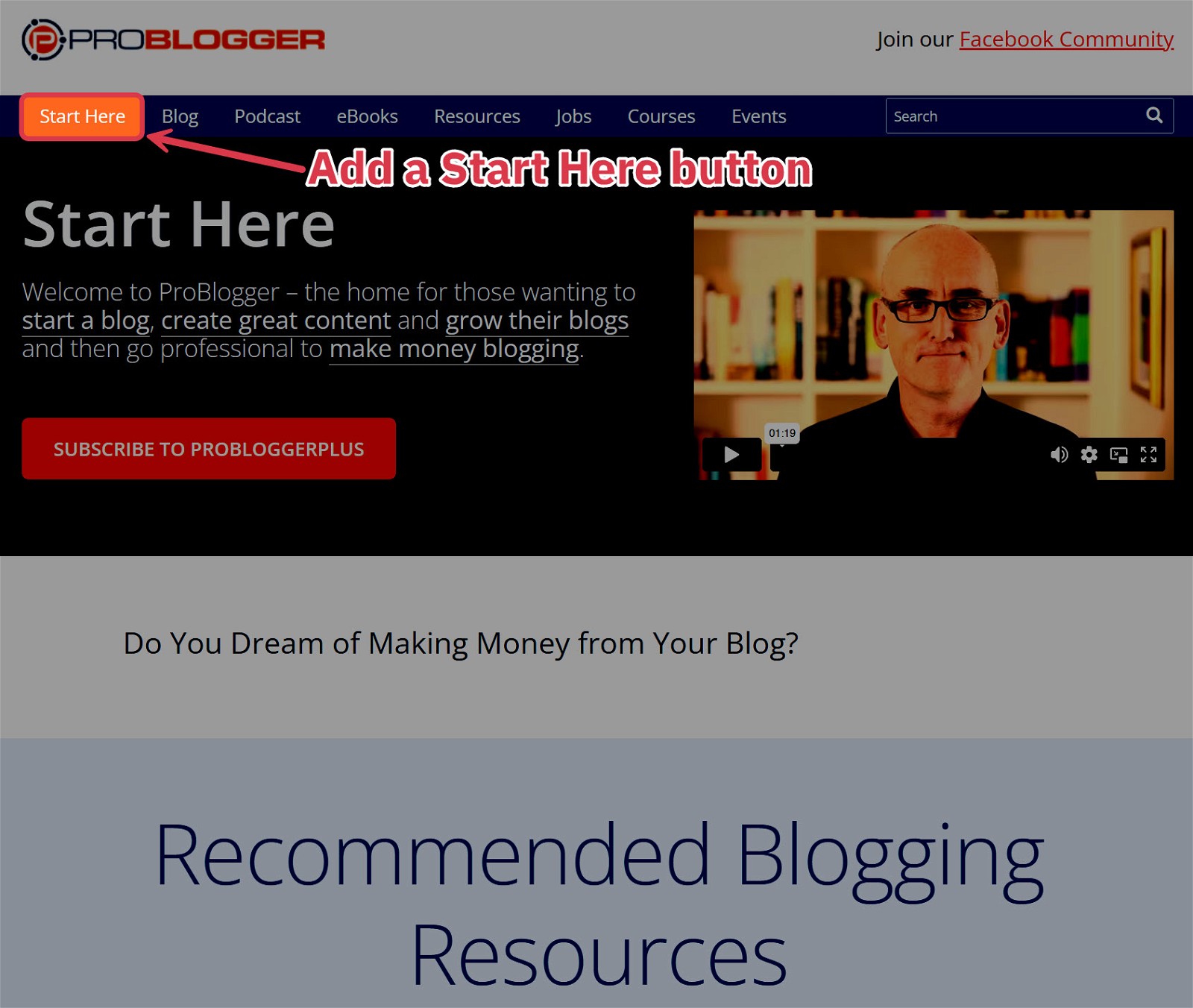
Here are a few tips for crafting high-converting resource pages:
- Make it easily searchable
- Explain why you’re recommending a specific tool
- Highlight the pros and cons of each recommendation
- Include a link to a more in-depth review, if you have one
- Include a button with a CTA to the tool or service page
Remember to prioritize quality over conversions – if you recommend bad products, you’ll lose the trust of visitors right off the bat.
4 Add Links to Your Digital Products and Courses
Adding affiliate links to courses or digital products can increase your earnings. Whenever you mention a product, you can use an affiliate link to share it with your customers.
Here are some strategies for promoting affiliate links in your products:
- Add them to a Recommended Tools page
- If you’re selling an ebook, embed affiliate links in the text
- Add them to the course notes underneath video content
- Reference them directly in your videos
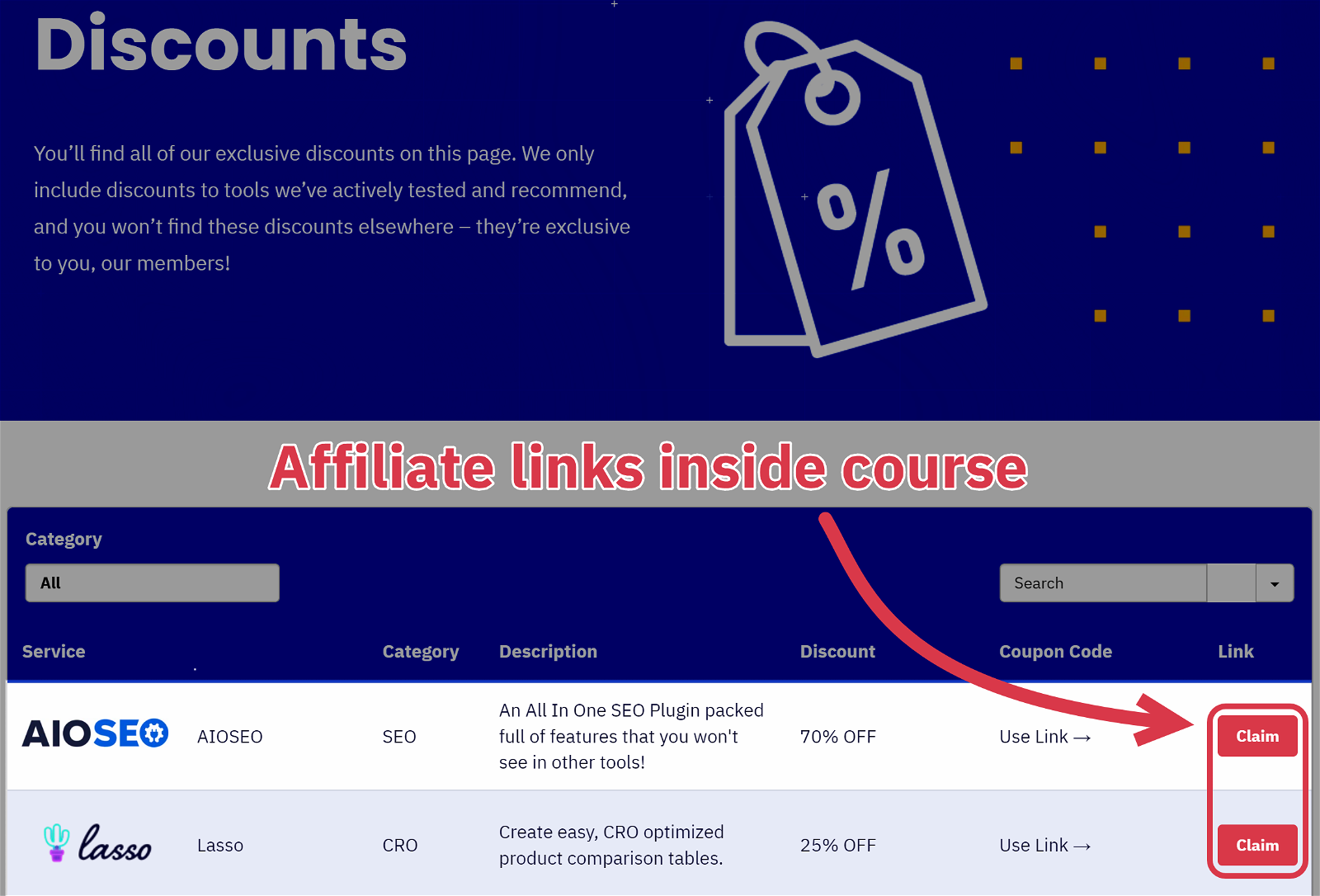
If you take this approach, make sure the product actually provides value in your course content. Stuffing irrelevant affiliate links into paid content isn’t a great look, and can lower your credibility amongst your most loyal audience members.
You also don’t want to oversell the links. Mention them naturally as part of your course.
5 Build an Email List
Affiliate marketers who use email marketing earn 66.4% more than those who don’t. If you’re not leveraging this tactic, you’re leaving money on the table.
Here are a few reasons it’s such a great strategy:
- It’s a marketing channel you control
- It allows you to communicate directly with your audience
- It enables you to nurture and educate an audience over time
- It’s not affected by algorithm updates
- It’s not affected by fluctuating advertising costs
However, an email list is only effective when subscribers trust you enough to open the emails you send and click on your referral links.
Most emails should provide value and promote products at the same time. Emails can and should include both aspects to be successful. If you don’t provide value, people won’t open your messages. If you don’t promote products, you won’t make money.

You also need to be careful about which products you promote, as not all affiliate programs allow email promotion.
Here’s our preferred process for promoting links via email:
- Pick a high-paying offer that most of your subscribers will want
- Create a lead magnet that aligns with the offer
- Promote the lead magnet via opt-in pop ups
- Build email campaigns that promote your products
For a full rundown, check our guide on how to build an email list for affiliate marketing
6 Make YouTube Videos
People love watching product-related videos because they gain a fuller understanding of the products and can make better purchase decisions.
YouTube is the king of long-form product reviews — here are the best types of videos for affiliate conversions:
Single product reviews:

Roundup reviews:
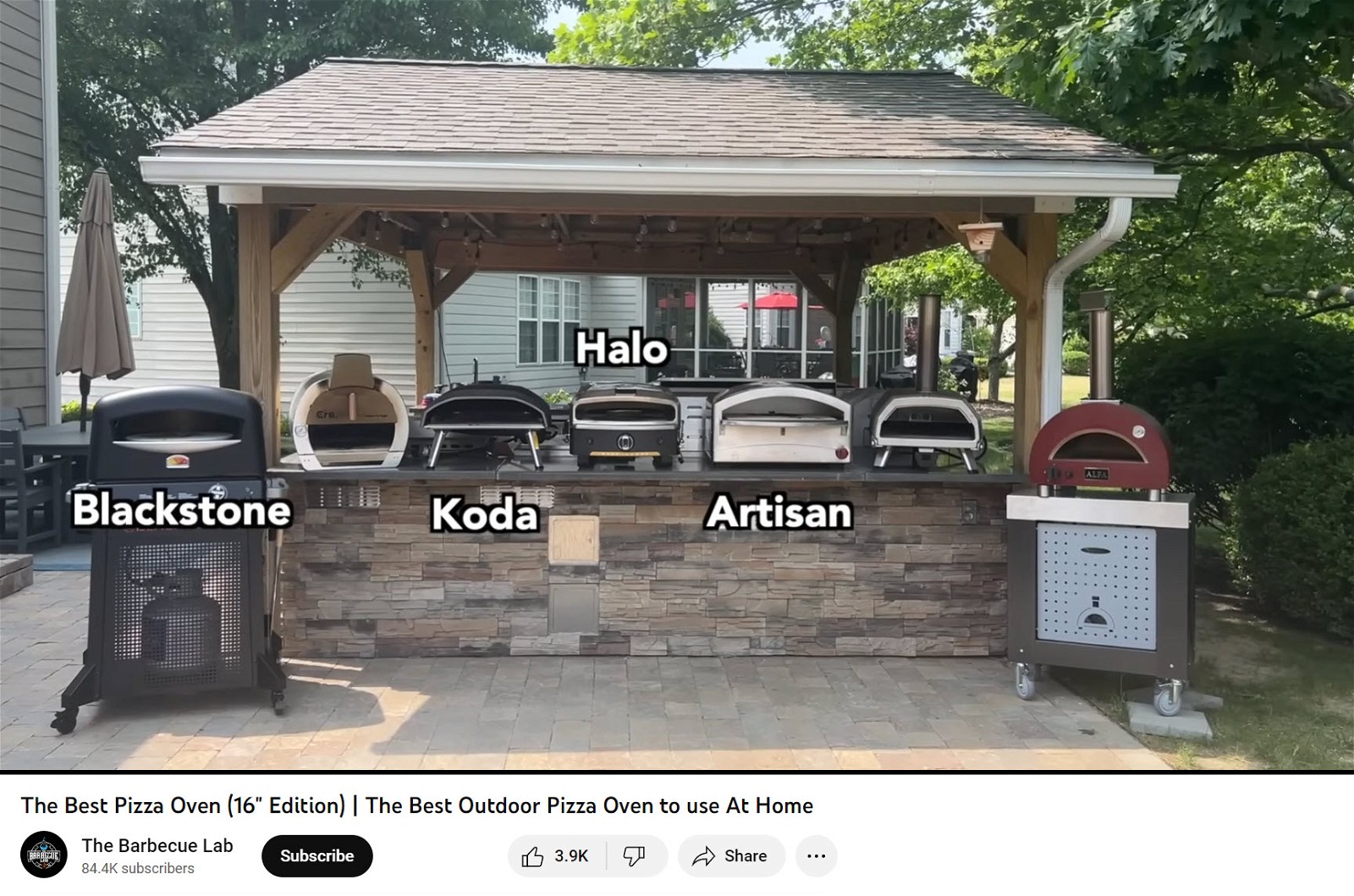
Product unboxing:
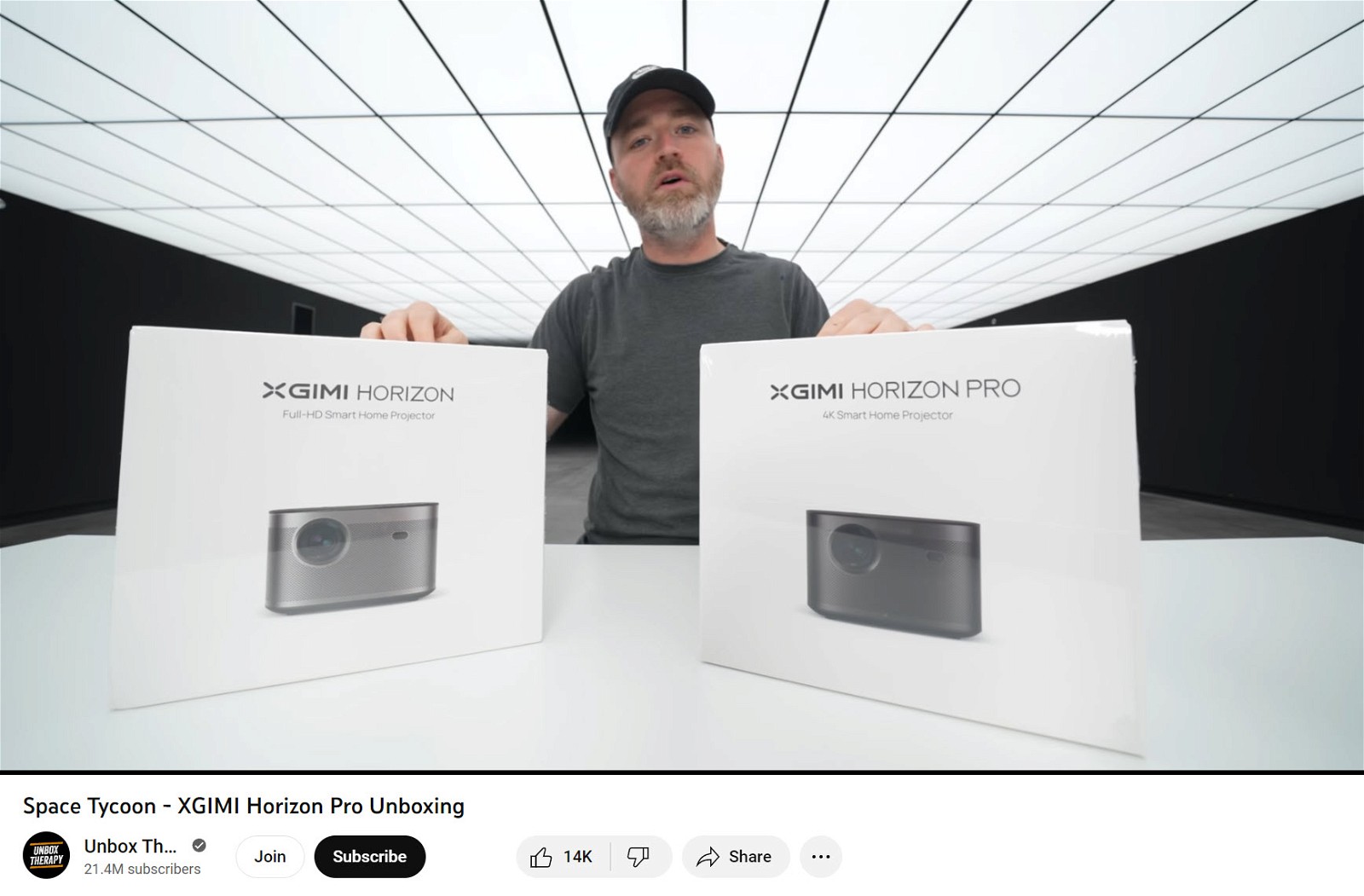
Buyer’s guides for beginners:
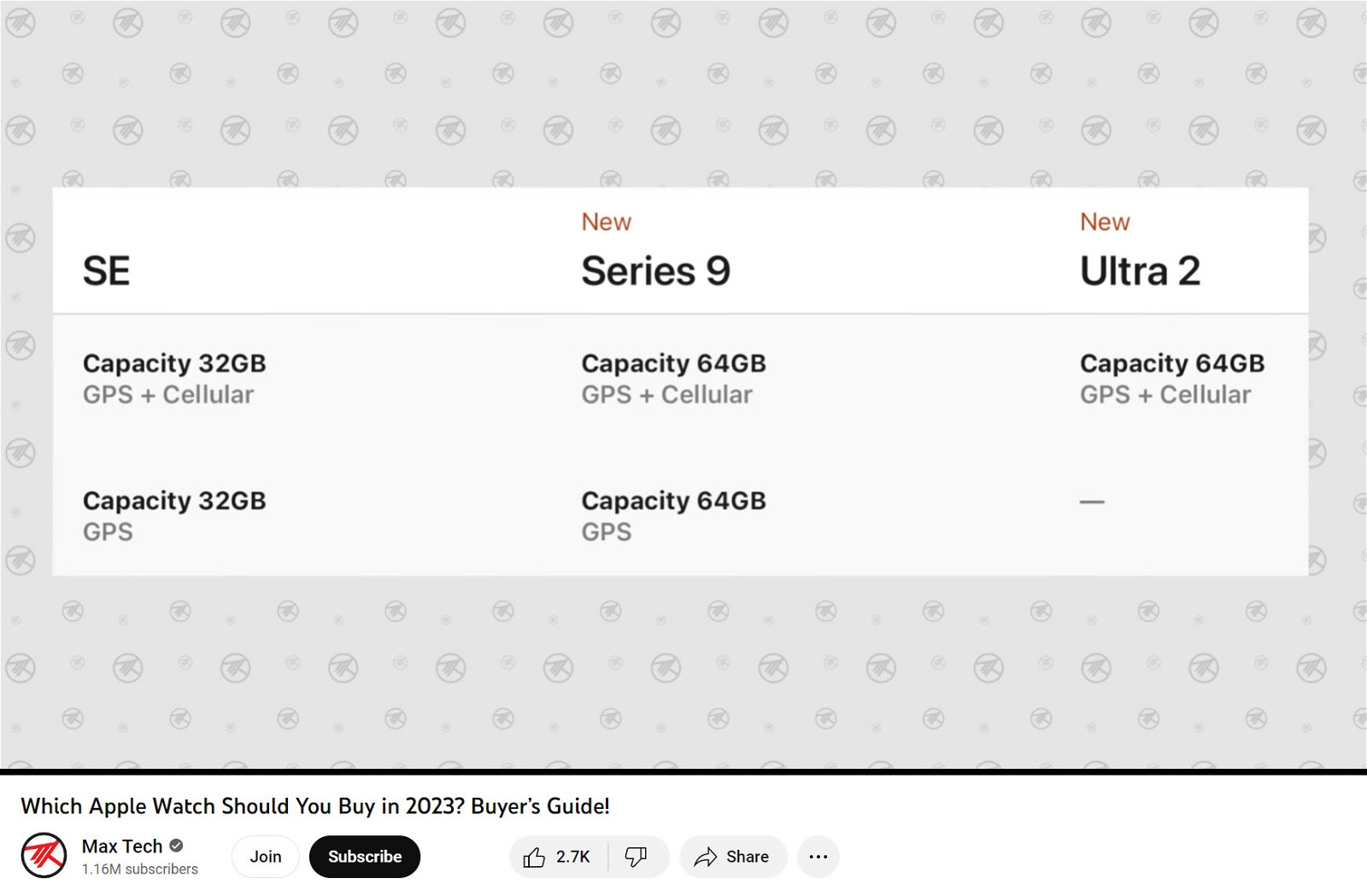
“1 Year Later” reviews:
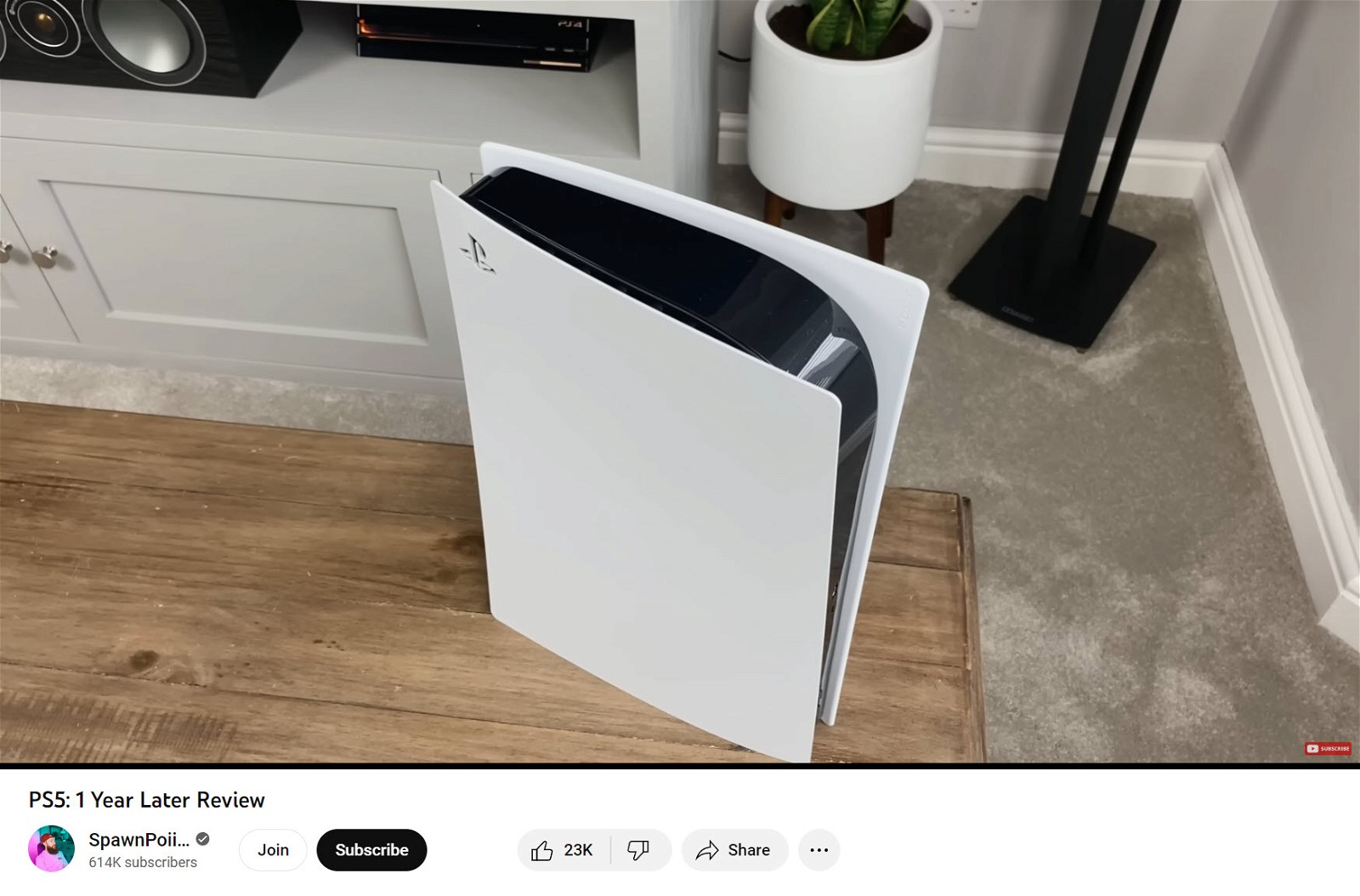
The easiest way to promote affiliate links on YouTube is to add them to the video description.
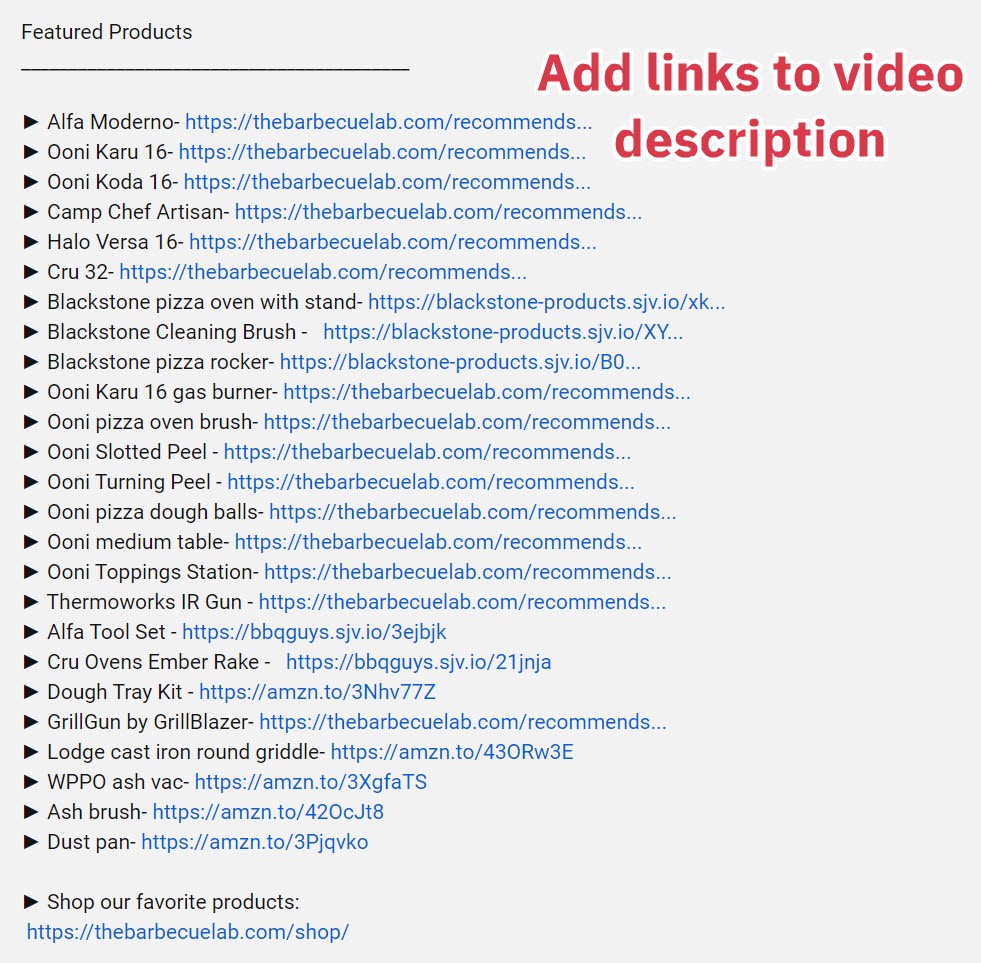
Unfortunately, your links will go unnoticed most of the time, as the majority of viewers won’t read the description.
That’s why offering an exclusive discount is a great way to drive affiliate conversions with video content. If you can tell people to use your coupon code in the video, you can earn commissions even if they don’t use your affiliate link.
👉 Read more: YouTube Affiliate Marketing
7 Use Social Media
Social media allows you to reach a broad audience for free, so it’s a great way to promote affiliate links.
To generate sales, you need an audience willing to listen to your product recommendations and take action. You won’t create an active following if you only post affiliate links.
You must first entertain, inspire, or inform before asking for something in return. Once you’ve built trust with your audience, you can start recommending products.
Since direct linking to affiliate offers isn’t allowed on many social platforms, you’ll have to use your profile to funnel traffic to your affiliate products.
Here are some of the best platforms for affiliate marketing:
Pinterest allows you to add an affiliate link directly in Pins. People use this platform for inspiration, so it’s great for product recommendations.
Instagram has a huge user base and allows you to reach many people, but you can only place a single link in your bio. (Use Linktr.ee if you have multiple links to promote.)
Facebook has the biggest audience and offers plenty of ways to promote affiliate links and recommend products. It’s very effective when combined with paid ads.
TikTok can generate a lot of engagement if you make a viral video, but it’s hard to get people to visit your affiliate links. You can experiment with TikTok Shop to earn commissions without trying to direct viewers off of the platform.
If you want to drive traffic back to your website, Pinterest and Facebook are your best bets. It can be difficult to get people to leave other platforms.
👉 Read more: Social Media Affiliate Marketing
8 Make a Podcast
Most people listen to podcasts while cooking, driving, or working.
Even if they aren’t ready to make a purchase, chances are they’re interested in the topic you’re discussing. This leaves room for making a product recommendation that includes affiliate links.
Mention that there will be a surprise for your listeners to boost engagement, and share an exclusive discount code can ensure you get commissions even if they don’t visit the site through your affiliate link.

To get the most out of your podcast, ensure it’s part of a broader online presence that includes a website and strong social media channels.
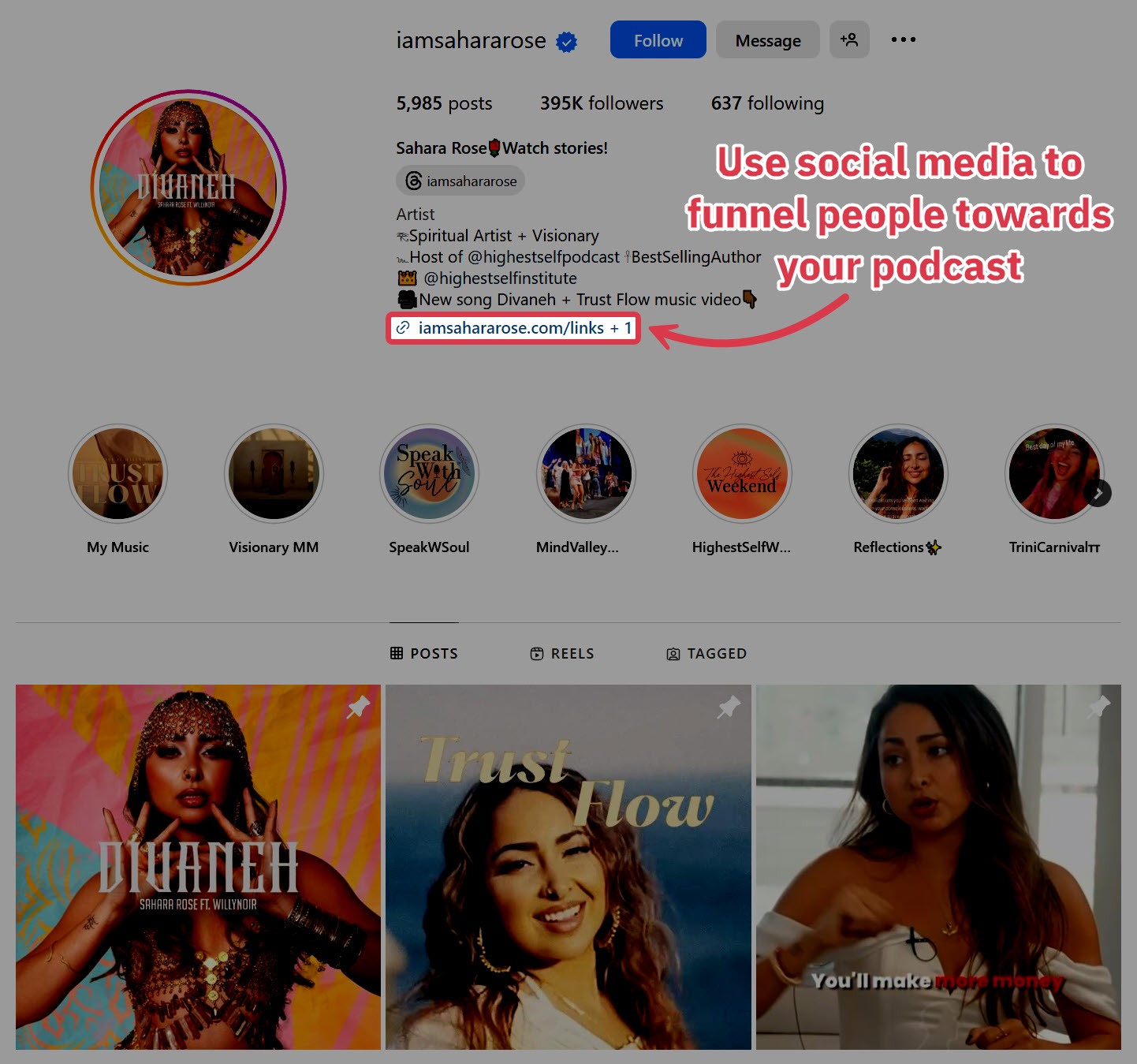
You should also use social media to funnel people toward your podcast and increase affiliate conversions.
9 Share Expert Advice on Medium
Medium is a publishing platform that allows you to write articles and instantly reach Medium’s large user base. Adding affiliate links to your Medium posts can generate substantial affiliate revenue.
Articles on Medium — a website with a 90+ Domain Rating – get indexed by Google, so you can gain a lot of visibility when they rank for relevant keywords. There are also many Medium alternatives you can try.
To make money by promoting affiliate links on Medium, write about trending topics you know a lot about.

As long as you write excellent content, Medium users won’t mind if you add a few affiliate links.
10 Run Paid Ads
If you want immediate results, you can’t beat PPC (Pay-Per-Click) ads.
The concept is pretty simple. You run an ad and earn a profit when the money spent for traffic is less than the commission received for approved conversions.

While Google Ads and Facebook are two of the most well-known paid traffic sources, almost every social network has some paid advertising capabilities, and there are plenty of other specialized ad networks to explore.
Here are a few more tips for PPC affiliate marketing:
- Use spy tools to research the market.
- Test a few different ads. Pause the unprofitable ones, and scale the winners.
- Constantly monitor your analytics. A minor error could cost you a fortune.
- Make sure your affiliate program allows PPC traffic. You don’t want to get banned from a program for not reading the rules.
While paid ads can be very profitable, I don’t recommend diving headfirst into them unless you’re already skilled in turning a profit from paid traffic. The ROI tends to be lower than organic traffic methods, and mistakes are costlier and harder to recover from.
👉 Read more: Best Traffic Sources for Affiliate Marketing
Additional Tips For Promoting Affiliate Links
Here are a few extra affiliate marketing tips to boost your affiliate link performance.
Prominently Display Affiliate Disclosures
You should always add an affiliate disclosure to your website or social media profiles.
Not only is it the ethical thing to do, but it’s also required by law. Some programs will even ban you if you don’t add a disclosure – Amazon is a prominent example.
You shouldn’t hide it at the bottom of your site or profile, either. The best practice is to make it clear, noticeable, and readable.
Only Promote Products Relevant to Your Audience
Make sure any products you recommend are relevant to at least a portion of your audience. Going too broad with your recommendations won’t only be ineffective, but can actually hurt your brand.
If you’re a hiking influencer who starts promoting cat toys in hopes of capitalizing on a trend, your normal followers will think less of your content and will lose trust in your recommendations.
Keep things focused on your niche, and you won’t have this issue.
👉 See also: How To Find The Best Affiliate Programs For Your Niche
Be Honest and Helpful
Here’s the secret to success in any business: help people solve their problems.
Share correct and up-to-date information. Publishing honest and unbiased reviews will bring you more value than sponsored blog content written to generate conversions.
Using shady tricks may increase your short-term affiliate revenue, but it will harm your reputation and your relationship with advertisers in the long run.
Track and Analyze Your Affiliate Campaigns and Conversions
Use analytics, the insights provided by social networks, and the dashboards available in your affiliate networks to understand your top-performing campaigns and improve your conversions.
You can track affiliate links using the system provided by affiliate networks if you run a blog or do affiliate promotions through social media, but it’s better to have your own system in place when doing paid advertising.
Summing Up
With all of our experience promoting affiliate links, we’ve found that building an affiliate marketing website is the most effective strategy.
It has the highest profit ceiling, the greatest ROI on your time investment, and is an asset you can eventually sell. (We’ve made multiple 6-figure affiliate website exits.)
If you want to build your own affiliate website empire, check out our free authority site training.
You’ll learn the 7 hard-won secrets we’ve discovered that make new sites 83% more successful.
